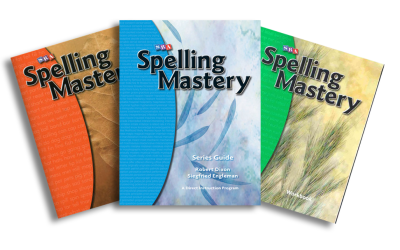Explicit Direct Instruction (EDI) emphasises the importance of teacher-led instruction where objectives are clearly defined, skills are explicitly taught through demonstration and modelling, and students are engaged through guided practice and opportunities for independent application.
This approach is grounded in the principles of direct and explicit teaching, where instruction is deliberate, structured, and leads with clear examples and guided practice to ensure that students grasp essential concepts and skills.
In this article, we will provide a comprehensive overview of Explicit Direct Instruction, from its theoretical underpinnings to practical classroom applications, highlighting its potential to transform teaching practices and significantly improve student learning outcomes.
Explicit Instruction and Direct Instruction
Explicit Direct Instruction (EDI) is a structured teaching methodology designed to maximise student learning by promoting clarity, engagement, and scaffolded support. It is sometimes called Explicit Instruction, sometimes Direct Instruction and sometimes both combined. The common goal is to make learning objectives clear and attainable for students.
Explicit Instruction (EI) emphasises clarity and transparency in teaching goals by stating the objectives of each lesson or activity from the outset. This leaves no room for ambiguity about what is being taught and why, and so students do not have to infer the learning objectives themselves. Instead, they are guided through a structured process where both the content and the goals are plainly outlined, making it easier for students to understand and master the subject matter and build a solid foundation of knowledge and skills, especially in the early stages of education.
Direct Instruction (DI) is the name of an actual commercially available program as well as a more specialised and structured form of explicit instruction, drawing heavily from B. F. Skinner’s behaviourist theories. It involves scripted teaching models designed to deliver instruction in a systematic, step-by-step manner. Programs that are based in the DI methodology are often characterised by their scripted, sequential lessons that build upon each other, ensuring that students have mastered prerequisite skills before moving on to more complex concepts.
DI emerged from a wider debate between two orientations in education: constructivism and instructivism. While constructivism advocates for a more learner-centred approach emphasising independent discovery and problem-solving, instructivism champions a teacher-led methodology where structured lessons with clear objectives are used to facilitate learning.
In Project Follow Through, the largest education evaluation ever conducted, Direct Instruction was ultimately found to be “superior both to control schools and to every other model in fostering basic reading and math skills, higher-order cognitive-conceptual skills, and even self-esteem” (Adams & Engelmann, 1996; Becker & Carnine, 1981 in Kozioff, Lanunziata, Cowardin, & Bessellieu, 2000), as compared with 12 other models of instruction.
Key concepts in Explicit Direct Instruction
The integration of scaffolding and checking for understanding into the framework of EDI enhances the effectiveness of this instructional approach, particularly in promoting student engagement and ensuring that they have mastered the content of the lesson.
Scaffolding
Scaffolding is a teaching method that involves providing temporary support to students as they learn new concepts or skills until they no longer need them.
In the context of Explicit Direct Instruction, scaffolding serves as an essential mechanism for gradually moving students from dependent learning to independent practice and eventual mastery. It involves breaking down learning into smaller, more manageable components and offering structured support at each step of the learning process.
This support might come in various forms, such as guided practice, visuals, examples, and prompts, which are gradually removed as students gain proficiency.
In EDI, scaffolding is meticulously planned and executed, often following a specific sequence:
- Modelling: The teacher demonstrates the task or concept explicitly, providing clear examples and showcasing the expected outcome.
- Guided practice: Students attempt the task with the teacher’s guidance, which includes immediate feedback and correction. This phase often involves questioning techniques that prompt students to think critically and apply what they’ve learned.
- Independent practice: As students become more confident and demonstrate understanding, the support is gradually withdrawn, and they are encouraged to complete tasks independently.
Scaffolding within EDI is designed to ensure that students not only understand the content but can also apply their knowledge and skills independently, promoting deeper learning and retention.
Checking for understanding
Checking for understanding is a continuous process embedded throughout the EDI lesson to assess whether students are grasping the material being taught. This involves the strategic use of questioning, observation, and assessment techniques to gauge student understanding at multiple points during the instruction.
Key strategies for checking for understanding in EDI include:
- Purposeful questioning: Asking targeted questions that require students to demonstrate their knowledge or thinking process. These questions are designed to assess both surface-level recall and deeper comprehension.
- Choral responses: Engaging the whole class in responding to questions verbally in unison to ensure active participation and quickly gauge the general level of understanding.
- Individual turns: Selecting individual students to answer questions or demonstrate understanding, providing insights into individual learning progress.
- Exit tickets: Using brief assessments at the end of a lesson to measure what students have learned and identify areas that may require further instruction.
By continuously checking for understanding, teachers can make informed decisions about when to proceed with the lesson, when to reteach certain concepts, or when additional scaffolding might be necessary for some or all students.
Practical application of Explicit Direct Instruction
Building on the foundational theoretical understanding of Explicit Direct Instruction outlined above, this section will outline the EDI model and give concrete examples and strategies for how teachers can implement it in a classroom setting across a variety of subjects for students from Foundation to Year 6.
The Explicit Direct Instruction model
- Learning objective: Teacher provides a statement describing what students will be able to do by the end of the lesson, setting out clear and measurable goals along the way.
- Activation of prior knowledge: Teacher links new information to what students already know so that they are building upon existing knowledge.
- Step-by-step instruction: Teacher breaks down complex skills and concepts into manageable steps, explaining the importance of the lesson content and the concepts contained in the learning objective, and modelling the steps or processes used to execute the skills in it.
- Guided practice: Teacher works problems with students until they can demonstrate that they have learned the concepts and skills in the Learning Objective.
- Systematic feedback: Teacher offers timely and specific feedback to guide student improvement.
- Independent practice: Students practise what they have been taught on their own.
Teaching Reading using the Explicit Direct Instruction model (Foundation)
| Learning objective | “Students will be able to blend phonemes into words.” |
| Activation of prior knowledge | The lesson begins by reviewing the alphabet sounds, particularly focusing on the letters ‘s’, ‘a’, ‘t’, ‘p’, ‘i’, ‘n’, which have been covered in previous lessons. |
| Step-by-step instruction | The teacher demonstrates blending sounds into words using a puppet named “Soundy” who “loves to hear words come together.” For example, /s/-/a/-/t/ is blended verbally by the teacher into “sat.” |
| Guided practice | Using individual mini whiteboards, students attempt to blend given phonemes into words under the teacher’s guidance. The teacher walks around the classroom, offering support and immediate correction as needed. |
| Systematic feedback | Teacher praises correct responses with specific feedback, e.g., “Great job blending the sounds into ‘sat’, James! I could hear each sound clearly.” |
| Independent practice | Students receive a list of phonemes to practise blending at their desks. They use small toys or counters to represent each phoneme, physically moving them together as they blend the sounds into words. |
Teaching Maths using the Explicit Direct Instruction model (Year 2)
| Learning objective | “Students will be able to identify and represent fractions of a whole using shaded regions.” |
| Activation of prior knowledge | Teacher starts a discussion about dividing a chocolate bar equally among friends to ensure each person gets a fair share. This scenario helps relate fractions to students’ real-life experiences. |
| Step-by-step instruction | The teacher introduces fractions using a visual aid: a large poster of a circle, a square, and a rectangle divided into equal parts. Demonstrates shading parts of these shapes to represent fractions like 1/2, 1/4, and 3/4. |
| Guided practice | Students work in pairs with fraction tiles and worksheets showing shapes divided into equal parts. They are tasked with shading in specified fractions of these shapes, such as shading 3 out of 4 parts to show 3/4. |
| Systematic feedback | The teacher circulates, offering specific feedback and highlighting common errors, such as incorrectly dividing shapes into unequal parts or shading the wrong number of parts. |
| Independent practice | For homework, students are assigned to find objects at home that can be divided into fractions (e.g., pieces of fruit, segments of a chocolate bar) and draw these out, labelling the fractions represented. |
Teaching Geography using the Explicit Direct Instruction model (Year 6)
| Learning objective | “Students will be able to describe the roles of producers, consumers, and decomposers in an ecosystem.” |
| Activation of prior knowledge | The lesson starts with a review of basic food chains, discussing how energy flows from the Sun to plants and then to animals. |
| Step-by-step instruction | Using a digital slideshow, the teacher presents a local Australian ecosystem, such as the Great Barrier Reef. The presentation highlights specific examples of producers (coral algae), consumers (fish, sharks), and decomposers (bacteria). |
| Guided practice | Students are divided into small groups and given a large poster board and markers. Each group selects an Australian ecosystem and uses drawing and labels to map out the roles of producers, consumers, and decomposers within it. |
| Systematic feedback | As groups work, the teacher provides feedback, encouraging students to think about the interconnectedness of organisms and the importance of each role within the ecosystem. |
| Independent practice | Each student selects one organism from their group’s ecosystem and researches its specific role, preparing a short presentation. This activity requires them to apply their understanding independently and explore the complexity of ecosystems further. |
Explicit Direct Instruction: Next steps
In summary, Explicit Direct Instruction (EDI) stands as a transformative approach in education, emphasising clarity and structured support to empower student learning. By melding explicit instruction with direct teaching methods, EDI effectively guides students from foundational understanding to independent mastery. This method’s strength lies in its clear objectives, step-by-step guidance, and consistent checks for understanding, ensuring that each student not only comprehends but also applies their learning effectively.
We at Good to Great Schools Australia are proud to offer an array of free resources embodying these principles. Explore 100’s of free, classroom-ready resources built using explicit direct instruction.



